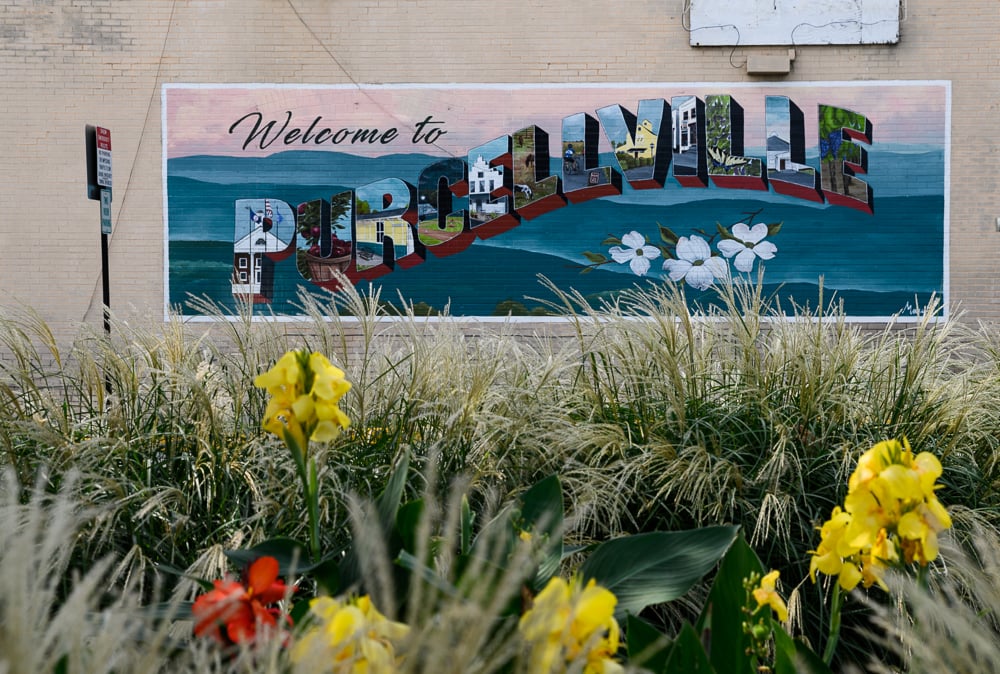At some point, everyone with a scintilla of imagination looks up into the clouds and imagines they see images there. The Brooklyn-based artist Spencer Finch manages to encapsulate that idyllic, relaxing pastime in his one-man show, “My Business, With the Cloud,” which opened September 11 and runs through January 23. It’s the inaugural exhibition for Now at the Corcoran, the gallery’s new contemporary-art program.
Displayed in two rooms, the show attempts and often succeeds at staging a dialogue with the Greco-Roman architecture of the Corcoran. Drawing on his knowledge of poetry and meteorology, Finch creates complex work that’s deceptively simple. The title of the exhibition, taken from an Emily Dickinson poem, demonstrates how other disciplines , from American poetry to the chemistry of color, have informed his work.
The star of the show, “Passing Cloud,” hangs whimsically in the grand rotunda. Made from theater gels and clothespins, the piece has a child-like feel, but its effect on the viewer is far more sophisticated. Casting different shades of blue throughout the room, the “cloud” invites visitors to walk beneath and examine the fluctuations of light. Using a history book and a colorimeter (a light meter used to measure color wavelengths in an object), Finch determined the exact levels of light at the intersection of Vermont and L streets, Northwest—the spot where President Abraham Lincoln and the poet Walt Whitman crossed paths in 1863. Then, using the natural light that filters into the rotunda from the oculus, Finch created the form inside the Corcoran and recreated the light from 147 years ago.
The rest of Finch’s work, located in an adjacent gallery, showcases his prior attempts at cloud creation, some more successful than others. Recent drawings of clouds that were made with small pieces of Scotch tape better illustrate the translucent and transitional nature of clouds than the same concept done with solid construction paper in 2002. And a series of photographs, “The Taxonomy of Clouds,” taken in 2006, are exquisite, capturing reflections of clouds in puddles on the streets of Brooklyn.
A cagelike sculpture in the center of the gallery, “64 Ways of Looking at a Storm Cloud,” has similar strength, but it’s less playful than “Passing Cloud,” which is made of fluorescent light tubes calibrated to match the storm-cloud colors in various landscapes by John Constable, an early 19th century English Romantic painter. In other words, it’s another conversation with the past.
Three mosaics from 1998, together called “Wandering Lost Upon the Mountain of our Choice,” hang on the wall farthest from the gallery’s entrance. Finch uses tiles that match the colors in photographs of blizzard conditions taken on failed mountaineering expeditions. These pieces feel out of place due to their heaviness and solidity, but they reveal a lot about Finch’s evolution as an artist. Like the clouds themselves, his approach always changes, but the core elements—light and air and using those to capture a lost moment—remain the same.
Subscribe to Washingtonian
Follow Washingtonian on Twitter
More>> After Hours Blog | Arts & Events | Happy Hour Finder | Calendar of Events

















